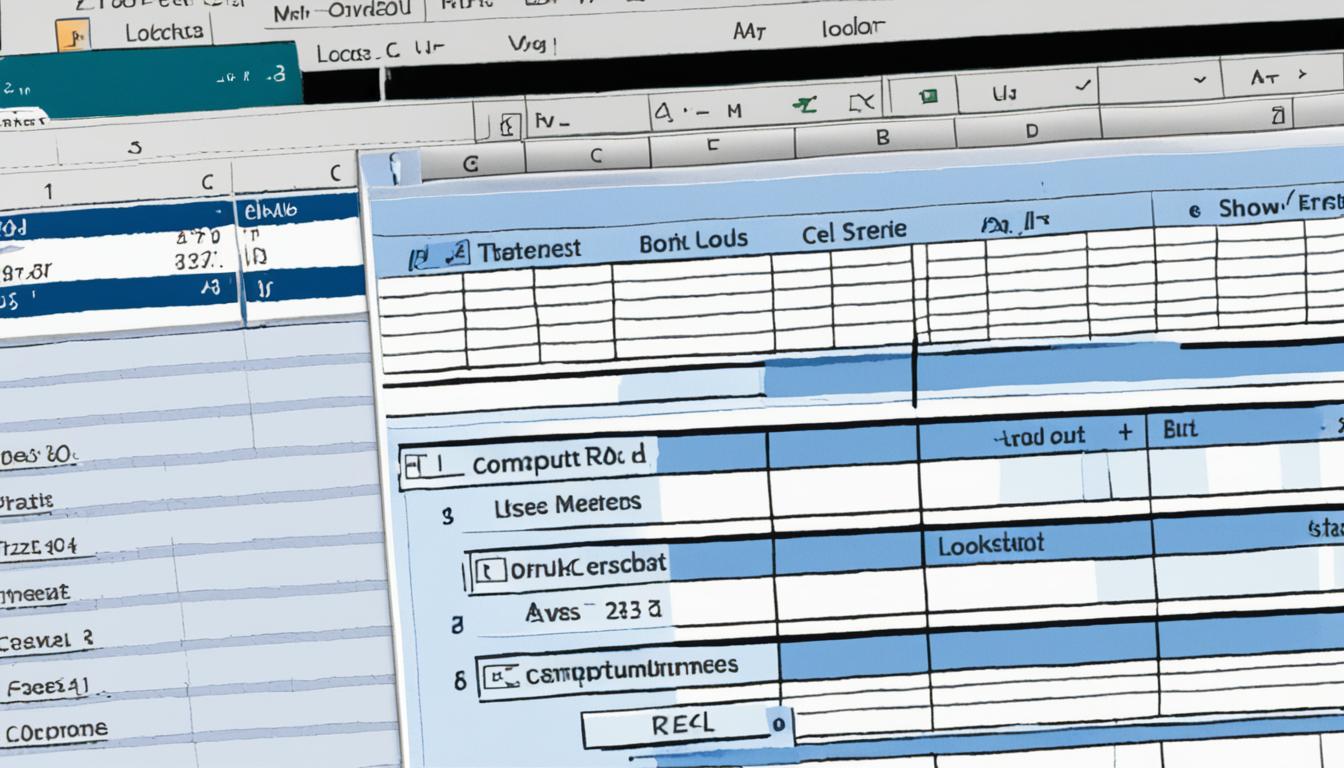How to find the name of a file from a folder?
Did you know that the average person spends a staggering 2.5 hours each week searching for files in digital folders? That’s equivalent to over 5 full days every year! With the amount of time wasted on file search, wouldn’t it be great to have an efficient way to locate the name of a file from a folder?
In this article, I will show you various methods to streamline your file search process and easily find the names of files within folders. Whether you’re using Excel, R, or VBA, there’s a solution for you.
Key Takeaways:
- Save time by using specific methods to locate file names within folders.
- Power Query in Excel simplifies file name retrieval from folders and sub-folders.
- R users can utilize the list.files() function to retrieve file names efficiently.
- Create custom functions with VBA in Excel for personalized file name retrieval.
- Consider the limitations of each method before choosing the most suitable one for your needs.
Using Power Query in Excel
Power Query, also known as Get & Transform in Excel 2016 and later versions, is a powerful tool that allows you to retrieve file names from a folder and its sub-folders. With just a few simple steps, you can easily get a list of all the file names and their metadata from a folder right within Excel.
Unlike other methods, Power Query is built into Excel 2016, so there’s no need to install any additional software. However, if you are using Excel 2010 or 2013, you will need to install the Power Query add-in to access this feature.
Once you have Power Query enabled, you can start retrieving file names from your desired folder. Simply open the Power Query editor, navigate to the “Get Data” option, and choose “From File” and then “From Folder”. This will allow you to select your folder and import all the file names along with their metadata.
One of the advantages of using Power Query is its ability to manipulate the retrieved data further. After importing the file names into Excel, you can apply filters based on file type or specific folder names. This gives you the flexibility to sort and analyze the file names according to your requirements.
With Power Query in Excel, retrieving file names from a folder has never been easier. Its integration within the software and its ability to handle sub-folders make it a convenient and powerful tool for managing your file naming tasks.
Using list.files() in R
When it comes to retrieving the names of files in a folder using R, the list.files() function is a powerful tool at your disposal. By specifying the folder path as an argument, you can easily obtain a list of all the file names within that folder.
However, it’s important to note that the list.files() function retrieves only the names of the files within the main folder and does not include any sub-folders. This limitation can be addressed by using the normalizePath() function.
The normalizePath() function ensures that the complete path is displayed without any truncation by using the ~ notation. By combining these two functions, you can efficiently retrieve file names from a folder in R while preserving the full path.
Here’s an example of how to use list.files() and normalizePath() together to retrieve file names:
folder_path <- "path/to/your/folder"
full_path <- normalizePath(folder_path, winslash = '/')
file_names <- list.files(full_path)
file_names
In the code snippet above, replace “path/to/your/folder” with the actual path to the folder you want to retrieve file names from. The winslash = '/' argument ensures compatibility with different operating systems.
By executing the code, you will obtain a list of file names from the specified folder in R.

As seen in the table above, the list.files() function fetches the names of all files within the main folder, allowing you to easily access and work with the desired files.
Now that you know how to use list.files() in R, you can efficiently retrieve file names from a folder and proceed with any further analysis or processing tasks.
Using VBA in Excel
For Excel users who are comfortable with VBA, custom functions can be created to retrieve the names of all the files from a folder. By using VBA code, you can create a user-defined function (UDF) that can be easily reused without repeating the steps. The VBA code allows you to iterate through the files in a folder and retrieve their names. You can also modify the code to filter the file names based on specific criteria, such as extension or keyword. This provides flexibility and customization options for retrieving file names in Excel.
If you’re new to VBA, don’t worry! I’ll guide you through the process step by step. Here’s how you can create a custom function to get file names from a folder using VBA:
- Open Excel and press Alt + F11 to open the VBA editor.
- In the VBA editor, click on Insert and then select Module.
- In the module window, enter the following code:
Function GetFileNames(ByVal folderPath As String) As Variant
Dim fileNames() As String
Dim counter As Integer
Dim fileName As String
counter = 0
fileName = Dir(folderPath & "\*.*")
While fileName <> ""
ReDim Preserve fileNames(counter)
fileNames(counter) = fileName
counter = counter + 1
fileName = Dir()
Wend
GetFileNames = fileNames
End Function
4. Save the VBA module and return to your Excel worksheet. Now, you can use the GetFileNames function to retrieve the file names.
Here’s an example of how to use the GetFileNames function in Excel:
=GetFileNames("C:\Path\To\Your\Folder")
Replace "C:\Path\To\Your\Folder" with the actual path to your folder. The function will return an array of file names.
This custom function in VBA allows you to easily retrieve the names of all the files from a folder in Excel. You can further enhance the VBA code to perform additional tasks such as filtering the file names based on specific criteria or displaying additional information about each file.
Now that you have learned how to use VBA to get file names from a folder in Excel, you can take advantage of its customization options and create your own tailored solution to meet your specific needs.
Limitations and Conclusion
While there are multiple methods available to find the name of a file from a folder, it’s important to consider their limitations. For instance, the Power Query method in Excel can retrieve file names only from the main folder and not from its sub-folders. Similarly, the list.files() function in R also has a similar limitation, only retrieving file names within the main folder. However, the VBA method provides more customization options, allowing you to create custom functions in Excel. It’s worth noting that this method requires knowledge of VBA programming.
When choosing a method, it is crucial to consider your specific requirements and the limitations of each method. If you need to retrieve file names from sub-folders, the Power Query and list.files() methods may not be suitable. On the other hand, if you have expertise in VBA programming and need more flexibility and customization, the VBA method could be the right choice for you.
In conclusion, finding the name of a file from a folder can be accomplished through different techniques. While each method has its limitations, understanding these limitations and assessing your own needs and technical skills will help you select the most appropriate method. Whether it’s Power Query, list.files() in R, or VBA, choose the method that best suits your requirements and technical expertise for efficient file name retrieval.
FAQ
How can I find the name of a file from a folder?
How do I use Power Query in Excel to retrieve file names from a folder?
How can I use the list.files() function in R to retrieve file names from a folder?
How do I use VBA in Excel to get a list of file names from a folder?
What are the limitations of file name retrieval methods and how should I choose the method?
- How Strategic SEO Drove Growth for a CPAP E-commerce Brand - July 24, 2025
- Top 3 SEO Companies in Toronto: An Analytical Comparison - July 23, 2025
- SEO for Entry Door Services - April 24, 2025





















Post Comment
You must be logged in to post a comment.